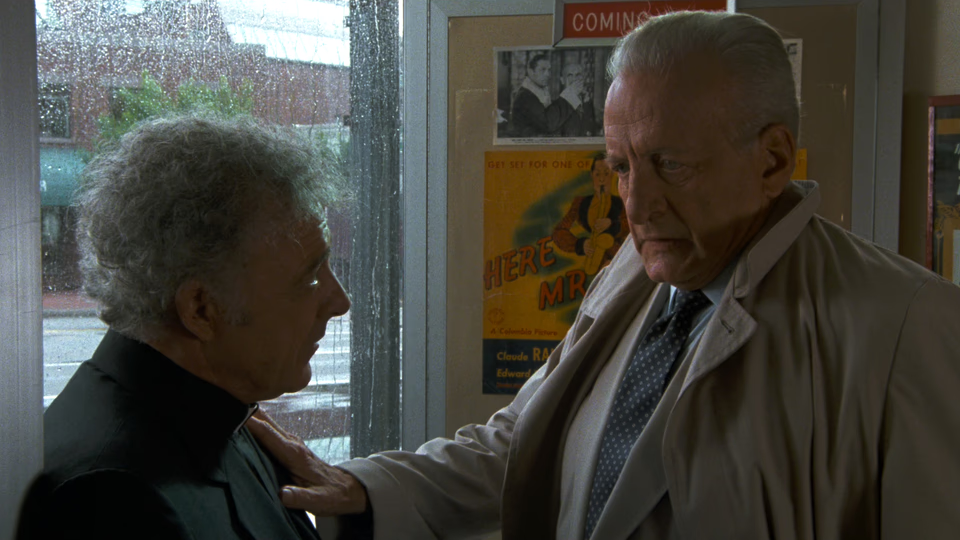The Exorcist III

Early in The Exorcist III we get a first-person shot tumbling down the famous Georgetown stairs. It might as well be foreshadowing the film’s third act disaster.
George C. Scott plays Lieutenant Kinderman, the detective from the first film, now investigating murders that match the M.O. of the Gemini Killer—a serial murderer executed fifteen years ago. The case leads him to a psychiatric ward and a patient who looks exactly like Father Karras. Something impossible is happening.
Scott makes this movie work. Where Lee J. Cobb played Kinderman as Columbo-lite, Scott gives us a man ground down by decades of human depravity. Watch him in an early scene with Ed Flanders, complaining about his mother-in-law keeping a carp in the bathtub. It’s a seemingly random moment. It tells you everything about their friendship, about Kinderman’s life, about Scott’s understanding of the character.
The Georgetown locations breathe authenticity. The famous steps. M Street. Scott brings Flanders a hospital burger “from Clyde’s.” These details matter. They anchor the supernatural in something real.
Brad Dourif arrives as the Gemini Killer and burns through the screen. He’s methodical, proud of his craft, terrifyingly human. No spinning heads or pea soup here. Just a psychopath who loves his work. It’s more frightening than anything in the original.
Writer-director William Peter Blatty constructs a smart supernatural procedural. The dialogue crackles. The tension builds. Yes, Kinderman misses obvious clues a detective shouldn’t miss. Yes, there’s a bizarre dream sequence with Fabio and Patrick Ewing as the Angel of Death that belongs in a different movie. But these are minor sins.
Then the third act arrives.
Killers suddenly walk on ceilings—possession now grants Spider-Man powers. Nicol Williamson materializes to perform an exorcism nobody asked for. He hasn’t shared a scene with Scott. We don’t know how he found this patient, or why he waited so long, or how he got past hospital security. The editing suggests he and Scott are in the same room, but they’re never in the same shot. You could excise his entire subplot without losing a frame of story.
Blatty called his source novel Legion, not The Exorcist III, because it didn’t have an exorcism. The studio clearly disagreed. What we get feels spliced in from another film, a desperate attempt to give audiences the possession theatrics they expect. It fumbles the landing completely.
Then there’s the exposition dump where Dourif explains that spirits need bodies to interact with the physical world, but that Karras’s brain damage took fifteen years to heal. This makes no sense. If you’re bound by physical laws, how do you resurrect the dead? Why explain it at all if the explanation is gibberish?
Two-thirds of a good movie. That’s what’s here. But two-thirds isn’t enough. Blatty had seven years between his source novel and this film. Seven years and he couldn’t fix the third act? The result isn’t a bad movie, just a frustrating, disappointing one.